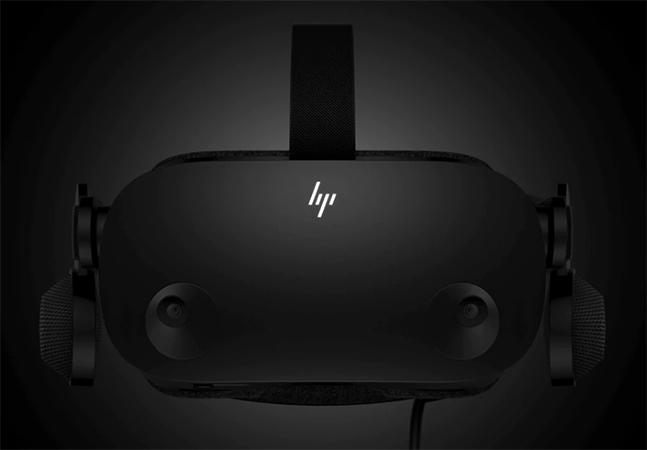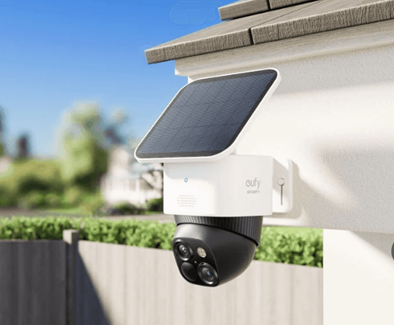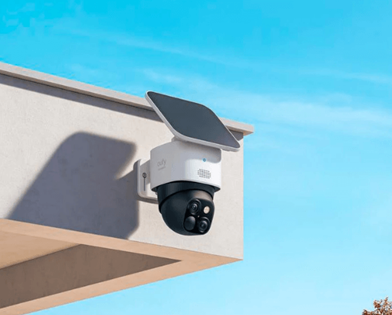Posey's Tips & Tricks
The Difference Display Resolution Makes on Windows Mixed Reality
By
Brien Posey
06/17/2021
Late last year, I wrote a column about
HP's next-generation mixed reality headset
, the Reverb G2. The headset offered vastly improved resolution (2160x2160 per eye) and a slew of new biometric features. At the time that I wrote that, however, the headset had not yet been released. The best I could do was comment on the specs and other information provided by the manufacturer. I wrote that the most compelling benefit to adopting HPs next generation would likely be the improved display resolution.
Now that the headset is readily available, I wanted to find out if my assumptions about higher resolution equating to a better overall experience were correct.
The Initial Setup
Before I get into a discussion about the difference that resolution makes, I wanted to share a few thoughts about the device, its capabilities and the initial setup process.
When I unboxed the
Reverb G2
, I immediately noticed that it had a premium feel and was significantly lighter than the Windows Mixed Reality headset that I had been using previously (the
Samsung HMD Odyssey Plus
). Like the Samsung headset, the Reverb G2 connects to your video card and to a USB port. Unlike the Samsung headset, the HP headset requires external power rather than being powered solely by the USB port. The process of connecting the PC to power and to the PC is not overcomplicated, but it did take me by surprise because the process is more involved than what was required by other mixed reality headsets that I own.
One thing that really surprised me about the headset is that HP
requires your PC to be equipped
with a high-end video card in order to use the Reverb G2 at its full resolution. The reason this surprised me was because I had previously read that HP would be using eye tracking to figure out where you were looking so that the available GPU resources could be focused on the area where graphic rendering mattered most, thereby reducing the overall graphical processing requirements. Fortunately, the PC I was connecting the headset to was already equipped with one of the graphics cards on the list, so I was good to go.
How Much Difference Does Resolution Make?
Having already spent a significant amount of time using Windows Mixed Reality with a few other headsets, I was curious to find out if the Reverb G2's impressive specs would make a noticeable difference in the quality of the mixed reality experience.
Upon donning the headset, there were two things I noticed right away. First, the screen door effect was completely gone. The screen door effect is something that has plagued mixed reality headsets from the very beginning. It occurs as a result of the pixels being too far apart, giving the illusion that you are looking at the virtual world through a mesh screen.
My first Windows Mixed Reality headset was Samsung's HMD Odyssey. Despite being the best headset available at the time, it had a very noticeable screen door effect. In case you are wondering, that headset had a resolution of 1400x1600 per eye.
When Samsung eventually released the HMD Odyssey Plus, it did not increase the display resolution (it was still 1440x1600 per eye). However, Samsung sought to counter the screen door effect by diffusing the light omitted by each pixel in a way that would make the spacing between the pixels seemingly vanish. In my opinion, Samsung did a great job making the screen door effect less noticeable, but it did not entirely eliminate the problem.
To date I have probably spent three or four hours with the HP Reverb G2. During that time, I have found that the higher resolution helps tremendously with the screen door effect. In fact, I have not noticed any screen door effect at all in the Reverb G2.
Another thing I noticed when I put the headset on for the first time was that it does a great job of blocking out the light from the outside world. This might sound trivial, but keeping outside light out of the headset is key to achieving an immersive experience.
What About the Overall Graphics Quality?
To find out how much of a difference the display resolution makes, I spent a bit of time exploring Microsoft's Cliff House interface. Cliff House is the default Windows 10 Mixed Reality environment. Aside from the improved visual clarity that comes from eliminating the screen door effect, Cliff House didn't really feel any different than it did when viewed with my other mixed reality headsets.
Next, I tried using the Reverb G2 with a mixed reality application called Amaze 3D. Amaze 3D might best be described as an eclectic mix of virtual reality videos and interactive movies. A lot of the content doesn't really appeal to me, but it is one of the higher-quality video apps available for Microsoft Mixed Reality, so the application is useful for testing purposes.
I was really surprised by my experience with using Amaze 3D on the Reverb G2. Amaze 3D looks great when viewed through my HMD Odyssey Plus headset, but the HP headset's higher resolution revealed limitations in the source materials. In some ways, this stands to reason. Most of the videos within Amaze 3D are a few years old and were probably recorded at a resolution that is significantly lower than that of the HP headset. I'm not saying the application looked bad when viewed through the HP headset, but rather that the headset made it a bit more obvious that the Amaze 3D videos are beginning to age.
Since I wanted to see what the headset is truly capable of, I decided to try it out with Microsoft Flight Simulator 2020. If you haven't seen this simulator, it is truly groundbreaking. Microsoft has literally
rendered the entire world in 3-D
. Being that I have
real-world flight experience

, it seemed like the perfect test for the new headset.
Upon launching the simulator, I found myself sitting in a virtual cockpit ready to take off. The 3-D effect was very nicely done, and as expected I was able to turn my head and look out the aircraft's various windows just as I would be able to do in real life. I could go on and on about how cool it was to use Flight Simulator with a mixed reality headset, but there is one simple thing that really underscores just how good the Reverb G2 actually is: The headset's resolution is high enough that I was able to read the aircraft's instruments without any problem.
In the past, I have tried using virtual reality headsets with other simulations and always found that the limited display resolution kept me from being able to read the simulated aircraft's instrument panel. For example, I once attempted a simulated space shuttle landing using
Space Shuttle Simulator 2007
from Exciting Simulations while wearing a
Vuzix iWear VR920
headset with 640x480 resolution per eye. Needless to say, the extremely limited resolution proved to be a major problem. In the case of Flight Simulator 2020 and the Reverb G2, however, reading the instruments was effortless and I found that the experience was nearly on par with real-world flight.
My overall assessment of the HP Reverb G2 is that it can deliver an amazing mixed reality experience so long as you have sufficiently powerful hardware and you have software that can take full advantage of the headset's resolution. Right now, a lot of the Windows Mixed Reality software has some catching up to do, but I think that over time the software will evolve to be able to take full advantage of higher-resolution headsets.
About the Author
Brien Posey is a 19-time Microsoft MVP with decades of IT experience. As a freelance writer, Posey has written thousands of articles and contributed to several dozen books on a wide variety of IT topics. Prior to going freelance, Posey was a CIO for a national chain of hospitals and health care facilities. He has also served as a network administrator for some of the country's largest insurance companies and for the Department of Defense at Fort Knox. In addition to his continued work in IT, Posey has spent the last several years actively training as a commercial scientist-astronaut candidate in preparation to fly on a mission to study polar mesospheric clouds from space. You can follow his spaceflight training on his
Web site
.
Featured
Report Describes Success Factors for Newly Hired IT Personnel
Microsoft this week unveiled survey results regarding IT new hires and their prospects at companies.
Microsoft Cloud for Healthcare Announces 'Azure Healthcare APIs'
Microsoft Cloud for Healthcare's Azure API for Fast Healthcare Interoperability Resource (FHIR) is getting support for additional data types, and is now renamed as "Azure Healthcare APIs," Microsoft announced this week.
New OneNote App To Replace Windows 10 App Version in 2022
Microsoft announced on Thursday that it's planning to replace the OneNote for Windows 10 app with a new OneNote app.
Azure Virtual Machine Users To Get Failure Analysis Reports
Microsoft this week announced emerging efforts to better explain Azure virtual machine failures for customers via coming root cause analysis (RCA) reports.
Microsoft Adds Group Policy Controls over Windows 10 Device Installs
Microsoft on Wednesday described a newly added capability for IT pros overseeing Windows 10 machines, permitting them to block or allow device installations via Group Policy settings.
Please enable JavaScript to view the
comments powered by Disqus.
comments powered by
Disqus
Most Popular
Most Popular Articles
Most Emailed Articles
Microsoft Cloud for Healthcare Announces 'Azure Healthcare APIs'
Report Describes Success Factors for Newly Hired IT Personnel
Microsoft Teams and Viva Progress Highlighted at Inspire Event
New OneNote App To Replace Windows 10 App Version in 2022
Microsoft Outlines Windows Server 2022 Coming Features and Editions









